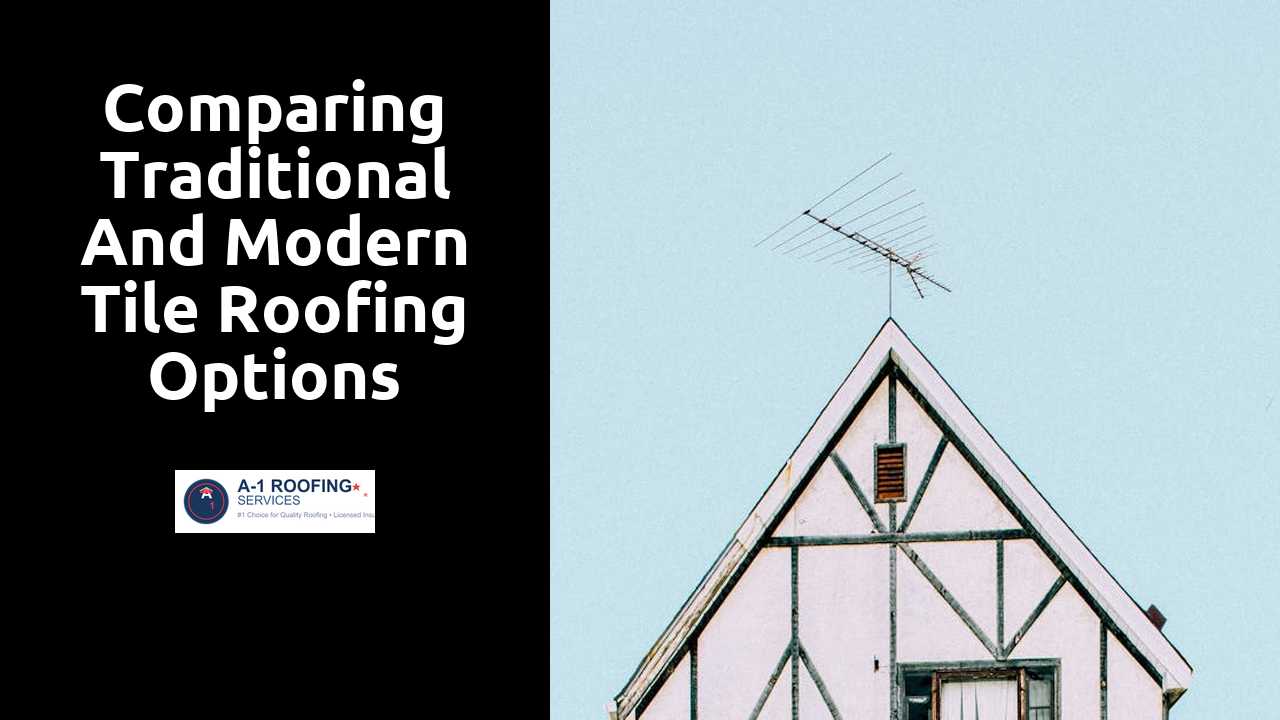
Comparing Traditional and Modern Tile Roofing Options
Table Of Contents
Installation Processes
The installation of traditional tile roofing often involves a meticulous process that requires skilled labor. Craftspeople typically begin by preparing the roof deck to ensure it is structurally sound. This includes adding underlayment and waterproofing membranes to protect from moisture penetration. Next, tiles, often made from clay or concrete, are carefully laid out, requiring precise alignment to maintain a uniform appearance.
In contrast, modern tile roofing options frequently employ advancements in materials and installation techniques. Many of these tiles are designed to interlock, simplifying the installation process and reducing labor time. The use of synthetic materials can also decrease the overall weight of the roofing system, which affects how the underlying structure is prepared. This modern approach can lead to quicker installations while maintaining durability and effectiveness.
Get more info by visiting this post.
Differences in Installation Techniques for Each Type
Traditional tile roofing typically requires a more time-intensive installation process. Each tile must be meticulously placed and secured, often involving the construction of a sturdy wooden framework or battens. This approach not only ensures the tiles remain stable but also allows for proper ventilation. Craftsmen often rely on age-old techniques, which may involve more labor and attention to detail, thus extending the overall installation timeline.
In contrast, modern tile roofing often utilizes advanced materials and techniques that streamline the process. Many contemporary options come with interlocking mechanisms, allowing for faster placement and reduced need for additional structural support. This efficiency can significantly shorten installation times, making it easier for contractors to complete projects within tight schedules. Moreover, advancements in lightweight materials have decreased the overall structural demands on the home, influencing how modern roofs are installed.
Cost Considerations
Traditional tile roofing often comes with higher upfront costs due to the materials and craftsmanship involved. Natural clay and concrete tiles can be significantly more expensive than their modern counterparts. Installation may also require specialized labor, potentially increasing overall expenses. Long-term durability compensates for these initial costs, as traditional tiles can last for decades or even centuries with proper maintenance.
In contrast, modern tile roofing options, while typically more cost-effective at the outset, may incur additional expenses related to installation technology and materials like synthetic tiles. These products often promise easy installation and lightweight solutions, which can lead to savings in labor costs. However, homeowners should also consider the longevity and potential replacement costs associated with modern tiles, as some may not offer the same lifespan as traditional materials.
Budgeting for Traditional vs. Modern Tile Roofing
When budgeting for roofing options, the cost of traditional tile roofing often includes expenses for materials, labor, and potential structural modifications. Common materials like clay and concrete tiles are durable but may require a higher upfront investment. Installation can also be labor-intensive, particularly with traditional methods, resulting in elevated costs. Homeowners should factor in long-term durability and maintenance when considering overall expenditures, as traditional tiles may have a longer lifespan requiring fewer replacements over time.
In contrast, modern tile roofing may offer a more budget-friendly initial purchase price due to advancements in manufacturing and materials, such as synthetic tiles. These options can reduce both material and installation costs while potentially providing a lighter weight alternative that eases structural requirements. However, the longevity and performance of modern tiles can vary, leading to variations in maintenance costs over the lifespan of the roof. Careful consideration of these factors is essential for making an informed decision that aligns with both financial constraints and long-term goals.
Energy Efficiency
The choice of tile roofing can significantly influence a home’s energy efficiency. Traditional clay or concrete tiles often provide excellent thermal mass, helping to regulate indoor temperatures by absorbing heat during the day and releasing it during cooler nights. This natural insulating ability can reduce reliance on heating and cooling systems, leading to lower energy bills. However, the weight and density of traditional materials may require more substantial structural support, which could increase overall costs.
Modern tile roofing options frequently incorporate advanced materials like synthetic composites or lightweight metals. These alternatives can enhance reflectivity, deflecting more sunlight away from the home. Increased reflectivity results in reduced heat absorption, particularly beneficial in warmer climates. Innovations in manufacturing also mean that some modern tiles are designed with improved insulation properties, further contributing to energy savings. Homeowners must consider both the initial investment and long-term energy impact when selecting roofing materials.
How Tile Choices Impact Home Insulation and Energy Use
Tile roofing materials vary significantly in their ability to provide insulation and energy efficiency. Traditional clay and concrete tiles are known for their thermal mass properties, allowing them to absorb heat during the day and release it slowly, helping to regulate indoor temperatures. This feature contributes to a more stable climate within the home, which can lead to reduced reliance on heating and cooling systems. By maintaining a consistent indoor temperature, these materials can help lower energy costs over time.
Modern tile options often incorporate advanced materials and reflective coatings designed to enhance energy efficiency. Synthetic tiles, for instance, can be engineered to reflect sunlight, minimizing heat absorption and keeping homes cooler in warmer climates. Additionally, some modern tiles offer improved insulation properties, helping to reduce heat loss during colder months. Understanding the specific characteristics of tile choices is essential for homeowners seeking to optimize their energy use and reduce their environmental footprint.
Related Links
Tile Roofing Durability: What Homeowners Need to KnowUnderstanding the Cost of Tile Roofing Installation